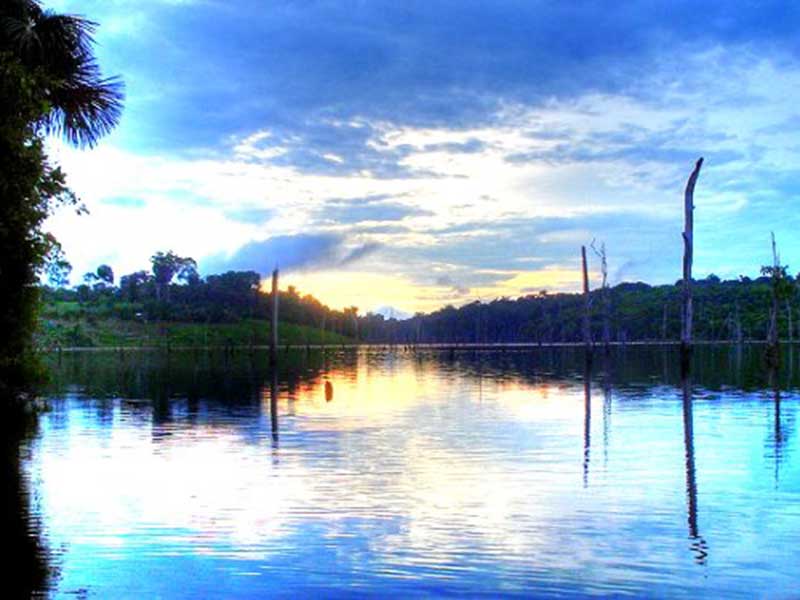Brazil’s devastating drought could have the unexpected consequence of finally prompting one of the sunniest countries in the world to take solar power seriously.
The combination of an imminent energy crisis, as reservoir levels fall too low to generate power, and the appointment of a more open-minded Energy Minister promise a rapid change in the situation.
The drought, which has produced a crisis in the supply of water, has seen a dramatic drop in the levels of the reservoirs that supply dozens of hydroelectric dams in the southeast and centre west – Brazil’s industrial powerhouse and major population centre.
As Brazil now begins the seven-month dry period, when rain is traditionally sparse, the reservoirs in the drought-affected region could fall to as little as 10% of their capacity, which the new Mines and Energy Minister, Eduardo Braga, admits would be “catastrophic” for energy security.
Thermal power plants, such as coal-fired stations, also consume huge volumes of water as they generate electricity.
Solar power was “a fantasy” – but no longer!
It means that plans to introduce solar energy into the energy mix are at last being considered as Brazil seeks alternatives to hydroelectric dams, on which it relies for up to 80% of its energy.
The current President, Dilma Rousseff, is embarking a huge new wave of mega-dam building in the Amazon, beginning with the highly controversial Belo Monte which is evicting 20,000 indigenous people in violation of their constitutional land rights.
The contribution of wind power, produced by onshore wind farms in the Northeast and South, has also begun to grow.
But solar energy, dubbed “a fantasy” by Rousseff just a few years ago, has so far been ignored. Only 400 homes in Brazil have photovoltaic (PV) panels installed on their roofs, because the cost is so prohibitive.
However, Braga has announced plans to turn dozens of hydroelectric dams in the southeast and centre west – which run the risk of becoming white elephants as the waters diminish – into solar energy farms.
Thousands of solar panels attached to buoys would be floated on the surface of the dwindling reservoirs to provide an alternative source of power.
Ministry officials have calculated they could add up to 15,000 megawatts (MW) of solar power capacity, which is greater than the maximum capacity of two of Brazil’s latest Amazon megadams – Jirau, on the Madeira river, and the controversial Belo Monte, on the Xingu.
Generating power, reducing evaporation
The solar panels would have the added advantage of reducing water evaporation while at the same time being cooled by the water, boosting their conversion efficiency.
Pilot projects are about to begin on two dams owned by state companies – Sobradinho, on the São Francisco river in Bahia, and Balbina, on the Uatumã river in the Amazon. If they are successful, the solar panels will be introduced into the dams in the southeast and centre west.
Brazil will not be the first country to experiment with floating solar power. Australia is trying it out with PV panels on the surface area of a wastewater treatment facility in Jamestown, South Australia. Their energy will power the plant.
Japan has also begun to build floating solar power plants, with a network of 30 sites each rated at 2MW, due to add 60MW of soalr capacity to the grid.
New solar incentives stimulate international ‘rush for the sun’
Tax breaks for the production of photovoltaic panels have been promised by Brazil’s Energy Minister, who also plans to introduce new rules to encourage the use of solar panels on buildings with large roof areas.
Two more auctions for solar power will be held this year. In the first such auction, held at the end of last year, 31 solar plants were chosen to provide a total capacity of 1,048 MW by 2017. The price was just under US$90 per MW – among the lowest in the world.
Factors that contributed to the low cost were the strong solar radiation factor in Brazil, and the fact that many solar parks would be installed in the same areas as wind farms, reducing the need to acquire land or build new transmission lines.
The 20-year contracts for energy supply involve investments of US$1.67 billion, and many foreign companies are already jostling to get a place in the Brazilian sun, in what promises to be a rapidly expanding market in a few years’ time.
Spanish, Canadian, American, Italian and Chinese companies already have a foot in the door. And as soon as the government and its development bank, the BNDES, come up with the promised tax breaks and incentives, the solar industry could take off.
Vast solar potential – 20 times greater than entire existing capacity!
At the moment, the total solar energy generated in Brazil is a piffling 15MW, much of it from new football stadium roofs installed for the 2014 football World Cup. But its vast solar energy potential, according to some sources, is equivalent to 20 times the total of all the present installed capacity of electrical energy.
While it waits to see if the solar experiment on the dams works, the government is hoping that energy consumption can be reduced by means of publicity campaigns and price increases.
The downturn in the economy, with little or no growth expected this year, will also help. It has also increased the use of thermal electric plants, powered by natural gas, coal and diesel oil to provide 30% – up from 20% – to the national grid.
These are expensive to run, powered by fossil fuels, and contribute to carbon emissions, and they could soon be consigned to history as solar energy becomes a regular part of Brazil’s energy mix.














